Navigating AI transition: Strategy & success

The clock is ticking in the digital age, and businesses ignoring the profound impact of artificial intelligence risk being left behind. AI isn’t just another tool; it’s rapidly becoming the bedrock for competitive advantage and sustainable growth.
This necessitates a strategic “AI transition” – a deliberate, comprehensive effort to weave AI’s capabilities into the very fabric of an organization’s operations, culture, and long-term vision.
In the 539th episode of the Outsource Accelerator Podcast, Ben Pullen of Outposter shares how his team responded to AI and applied it realistically.
“I’d be lying if I said that initially it came as a shocker, but I don’t think I was alone in that. But I think it only took a few months before we saw the benefits of it as an augmentation tool.”
Through this article, we’ll cut through the noise and determine the best manner to apply a successful AI transition.
Overview of AI technology
Artificial Intelligence (AI) encompasses a wide range of technologies designed to simulate human intelligence. These include machine learning, natural language processing, computer vision, and predictive analytics.
In practical terms, AI allows systems to analyze large volumes of data, recognize patterns, make decisions, and continuously improve performance without direct human intervention.
AI isn’t limited to futuristic applications. It’s already embedded in customer service chatbots, fraud detection systems, recommendation engines, and supply chain optimizations.
Understanding AI’s potential—and its limitations—is essential for making informed investment and implementation decisions.
5 Strategies for a successful AI transition
Implementing AI successfully requires more than just adopting the latest tools, as outlined in the steps below:
1. Start with a clear business use case
Too often, companies jump on the AI bandwagon without a clear goal. The result? Misaligned efforts that don’t deliver measurable value.
The most successful AI transitions start with a specific business problem. Is customer service lagging? Are there inefficiencies in supply chain forecasting? Is the sales pipeline stalling due to a lack of insights?
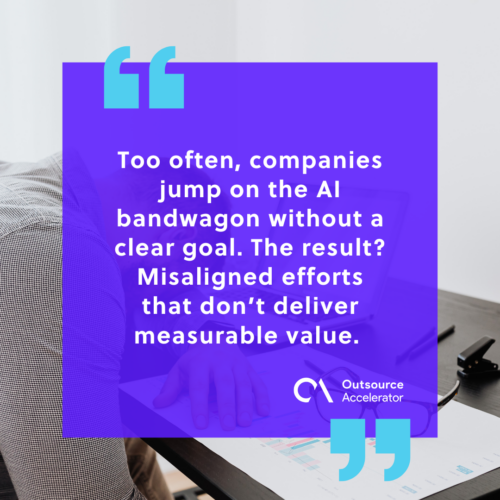
Identifying a focused use case anchors the AI initiative to a tangible business need, providing a benchmark for success and ensuring buy-in across leadership.
For example, Outposter applied ChatGPT to aid its less English-fluent staff.
“Let’s go back to ChatGPT using that as a language tool to really improve the accuracy, to improve the verbosity of the staff here. I think it really gives us some confidence too around how they communicate,” Ben says.
2. Invest in data readiness
AI runs on data. But not just any data—clean, relevant, and well-structured data. Before implementing AI tools, companies need to audit their data infrastructure.
This includes consolidating data silos, standardizing formats, and ensuring governance protocols are in place.
Without strong data foundations, AI models will produce skewed or unreliable outputs. Organizations should also consider ethical data practices and compliance with regulations like GDPR or CCPA, especially when handling customer data.
3. Build cross-functional AI teams
AI is not just an IT project. It intersects with operations, marketing, customer service, finance, and HR. Successful transitions require cross-functional teams that blend domain expertise with technical know-how.
Business leaders provide context and use-case relevance, while data scientists and engineers focus on model development and deployment.
This collaboration ensures the AI solution is not only technically sound but also aligned with operational realities and end-user needs.
4. Pilot, then scale
A common pitfall in AI adoption is trying to implement too much, too fast.
The smarter path is to start with a pilot project—preferably in a controlled environment—where outcomes can be measured, and learnings gathered.
Pilots reveal gaps in data quality, workflow compatibility, or user readiness. Once refined, the solution can be scaled across departments or geographies with greater confidence.
This phased approach reduces risk and builds internal momentum.
5. Embed AI into workflow, not just tools
AI won’t succeed if it’s layered awkwardly on top of existing processes. For AI to be impactful, it must be embedded into core workflows.
That means rethinking how tasks are performed, how decisions are made, and how teams interact with AI-generated insights.
For example, a sales AI tool shouldn’t just provide lead scores. It should be integrated into the CRM so reps can act on insights in real-time. Embedding AI into the fabric of daily operations ensures higher adoption rates and sustainable value.
Ben explains that they “use it as a way to boost the productivity of our existing staff.”
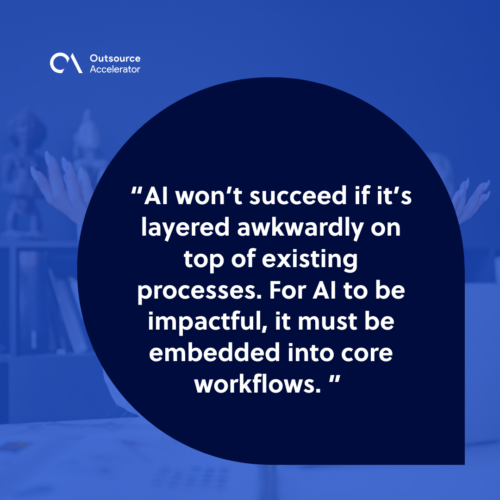
Overcoming challenges in AI transition
Despite its promise, transitioning to AI comes with hurdles that organizations must proactively address:
1. Managing change resistance
People are naturally wary of change—especially when it’s driven by technology that could redefine job roles.
One of the most persistent challenges in an AI transition is human resistance. Employees might fear job displacement or feel overwhelmed by new systems.
The key to overcoming this is transparency. Leaders need to clearly communicate the “why” behind AI adoption, emphasize how it complements rather than replaces human work, and provide opportunities for upskilling.
When employees are part of the process, they become champions rather than skeptics.
This is why Ben isn’t worried about any displacements.
“I think that while you’ve got access to great talent here at competitive rates, with great skill sets, with great attitudes, I don’t think that’s the worrying aspect.
I think the industry is probably robust enough in upskilling and training the existing cohorts. Cohorts that they’ll soon offer higher levels of skills that’ll still be useful when AI is in full effect.”
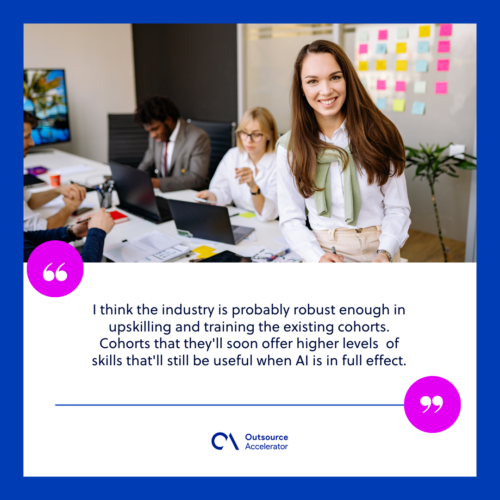
2. Navigating integration complexity
Integrating AI with legacy systems is rarely straightforward. Businesses often struggle with incompatible tech stacks, siloed data, or outdated infrastructure.
To address this, companies should prioritize interoperability when selecting AI solutions. Leveraging APIs, cloud platforms, and modular architectures can ease integration.
Partnering with experienced vendors or consultants also helps in navigating technical complexities, reducing time-to-value.
Ben heavily emphasizes not just jumping in but instead taking the time to learn for the sake of your clients.
“Your own customers are going to be the losers at the end of it, [if] they’re getting this buggy bot and ideally not getting the problem resolved.”
3. Ensuring model explainability and trust
Black-box AI models—especially in high-stakes areas like finance, healthcare, or hiring—can erode trust if users don’t understand how decisions are made.
Explainability is crucial for adoption and regulatory compliance.
Businesses should choose AI tools that offer transparency into how models function and why they produce certain outputs. Building this trust with end-users, stakeholders, and regulators is essential to long-term success.
The human element in AI transition
Amid all the talk of algorithms, automation, and analytics, it’s easy to overlook the human element. But in reality, AI transitions succeed or fail based on people.
Leadership vision, employee adaptability, and a culture of learning are just as important as the technology itself. Companies should invest in AI literacy at every level—not just for developers or data scientists, but for managers, frontline workers, and support teams.
Empowering people with the right knowledge and tools ensures they don’t feel displaced, but rather augmented by AI.
After all, the goal of AI isn’t to replace humans—it’s to enhance their capabilities and free them to focus on what they do best: creative thinking, empathy, and strategic decision-making.
Navigating the AI transition is complex, but with the right strategies, a clear-eyed view of the challenges, and a people-first mindset, organizations can unlock the full potential of artificial intelligence—turning ambition into lasting advantage.

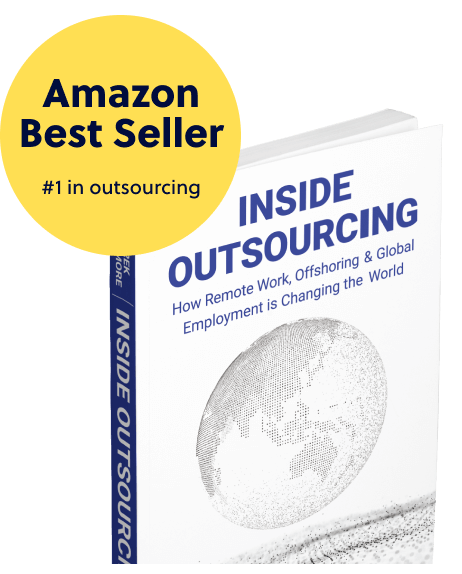



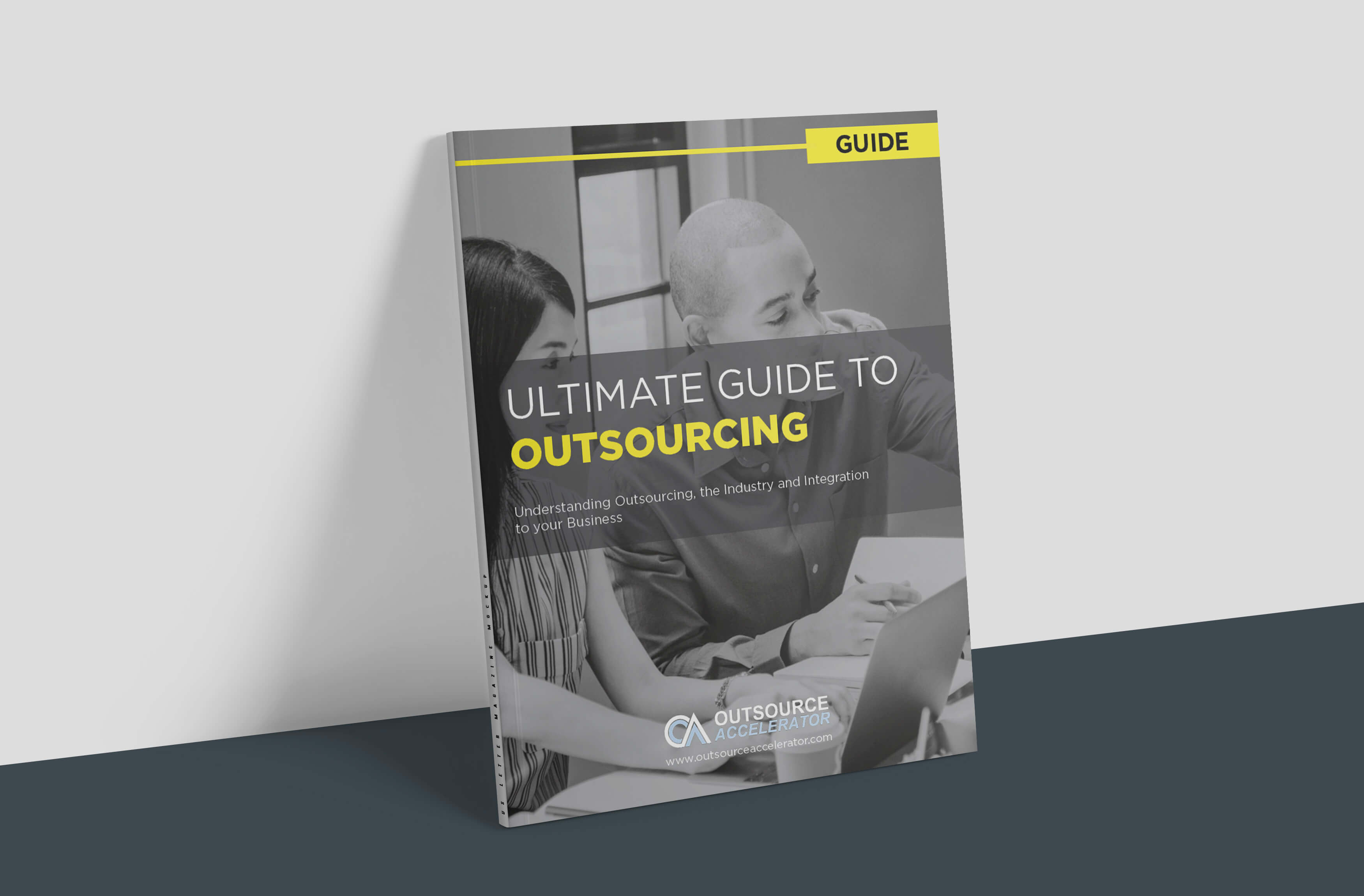

 Independent
Independent




